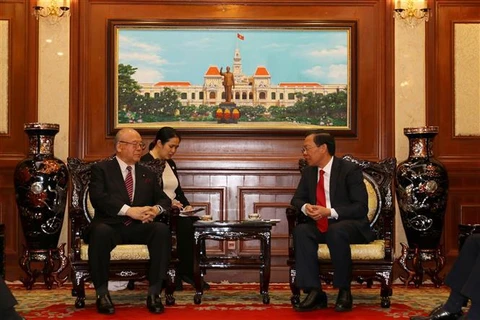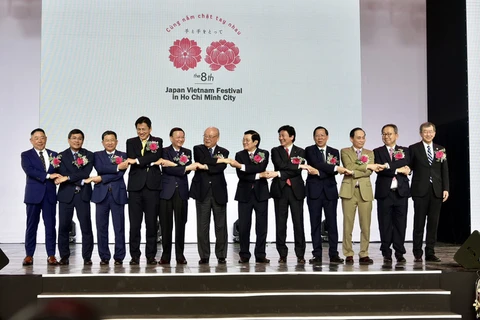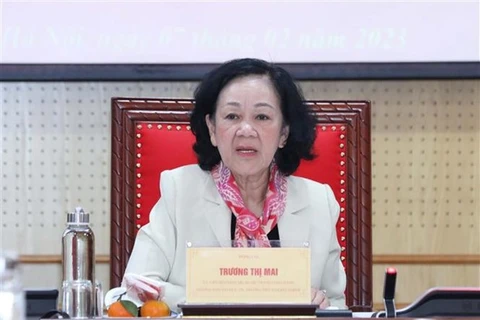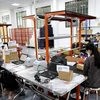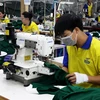Hanoi (VNA) – The Vietnam-Japan Joint Initiative (VJJI) has significantly contributed to improving the domestic business environment and raising Vietnam’s competitiveness in foreign direct investment (FDI) attraction, an official from the Vietnamese Ministry of Planning and Investment (MPI) has said.
Do Nhat Hoang, Director of the MPI’s Foreign Investment Agency (FIA), said at a pre-final evaluation meeting for the VJJI Phase VIII on March 2 that Vietnamese ministries and agencies have coordinated with the Japanese side in implementing commitments in the action plan.
They stand ready to work together with the Japan Chamber of Commerce and Industry (JCCI), the Japanese Embassy in Vietnam and relevant agencies to successfully materialise the joint initiative, laying ground for discussions on cooperation in the time ahead, he stressed.
The VJJI was launched in April 2003 as a special cooperation mechanism between the Vietnamese and Japanese Governments.
It serves as a policy dialogue forum between Japanese investors and relevant Vietnamese ministries and agencies, where proposals are made to help competent Vietnamese agencies fine-tune laws and policies.
The eighth phase of the initiatives focuses on 11 groups of issues. Because the global economy was seriously affected by the COVID-19 pandemic, especially disruptions in supply chains, Vietnam and Japan agreed to add three new groups of issues.
Over the past 20 years, many legal documents have been amended and issued, and various policy recommendations of the Japanese side put into consideration by Vietnamese ministries and agencies to report them to competent authorities during law and policy perfection and enforcement.
Japan has set forth a report proposing policies in an effort to promote investments by small- and medium-sized enterprises, the key players in Vietnam’s support industries.
Vietnam has been among the top 20 countries worldwide in terms of FDI attraction, which sees the remarkable contributions by Japanese firms through the initiative.
Japan has run nearly 5,000 projects in the Southeast Asian nation with a total registered capital of about 70 billion USD.
According to the latest survey by the Japan External Trade Organisation (JETRO), up to 60% of Japanese enterprises plans to expand their business in Vietnam./.
Do Nhat Hoang, Director of the MPI’s Foreign Investment Agency (FIA), said at a pre-final evaluation meeting for the VJJI Phase VIII on March 2 that Vietnamese ministries and agencies have coordinated with the Japanese side in implementing commitments in the action plan.
They stand ready to work together with the Japan Chamber of Commerce and Industry (JCCI), the Japanese Embassy in Vietnam and relevant agencies to successfully materialise the joint initiative, laying ground for discussions on cooperation in the time ahead, he stressed.
The VJJI was launched in April 2003 as a special cooperation mechanism between the Vietnamese and Japanese Governments.
It serves as a policy dialogue forum between Japanese investors and relevant Vietnamese ministries and agencies, where proposals are made to help competent Vietnamese agencies fine-tune laws and policies.
The eighth phase of the initiatives focuses on 11 groups of issues. Because the global economy was seriously affected by the COVID-19 pandemic, especially disruptions in supply chains, Vietnam and Japan agreed to add three new groups of issues.
Over the past 20 years, many legal documents have been amended and issued, and various policy recommendations of the Japanese side put into consideration by Vietnamese ministries and agencies to report them to competent authorities during law and policy perfection and enforcement.
Japan has set forth a report proposing policies in an effort to promote investments by small- and medium-sized enterprises, the key players in Vietnam’s support industries.
Vietnam has been among the top 20 countries worldwide in terms of FDI attraction, which sees the remarkable contributions by Japanese firms through the initiative.
Japan has run nearly 5,000 projects in the Southeast Asian nation with a total registered capital of about 70 billion USD.
According to the latest survey by the Japan External Trade Organisation (JETRO), up to 60% of Japanese enterprises plans to expand their business in Vietnam./.
VNA

